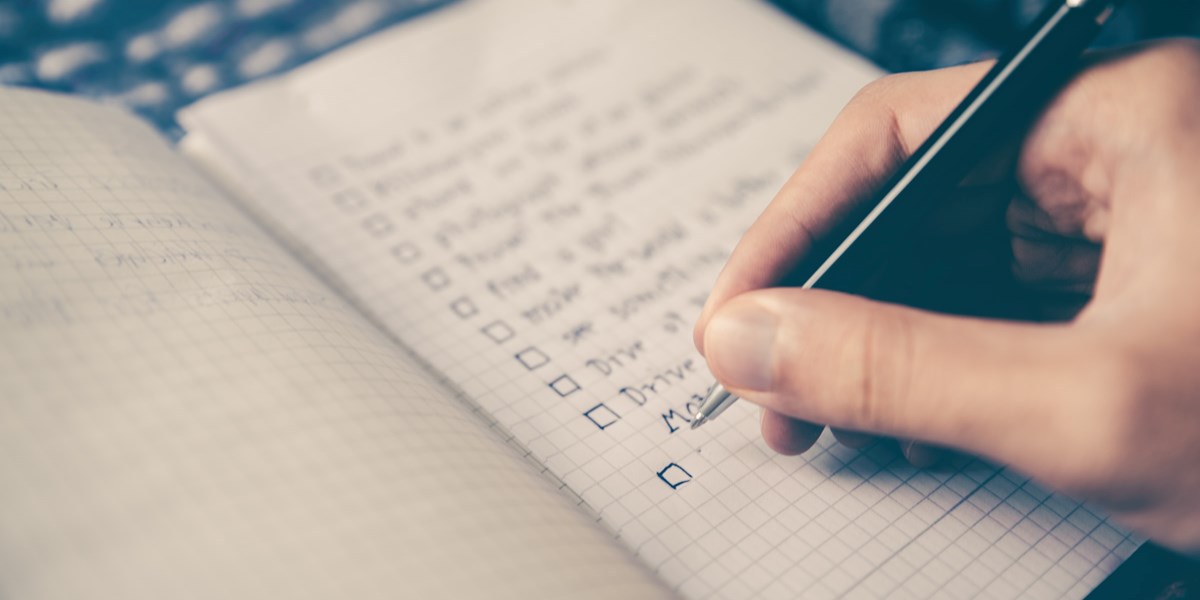The First Time Buyers Checklist

Feeling a bit swamped by all the things you’ll need to do to close on your first house?
Not to worry. This quick and easy first-time buyer checklist will walk you through all the steps you need to take to get your first home.
Step 1: Savings and Deposits
Before you can even consider getting a home, you need to have your finances in order. Houses aren’t cheap, so making sure you have the proper funds available is key before purchasing.
In most cases, you’ll need to have a minimum of 5% of the property value saved – this will act as a deposit you use to put down on the house. The rest can be financed by a mortgage.
However, for an extra layer of security, having a 20% deposit is preferred. This will make obtaining a mortgage easier, as lenders will have to supply a smaller loan.
Additionally, finding out how much you can borrow is of great importance. This will set the bar for what kind of prices you’ll be looking at.
You can do this with an online calculator but may wish to contact a mortgage broker to give you a more accurate figure.
Step 2: Pre-Approval for Mortgage
When getting in touch with a mortgage broker, it’s important to get a mortgage in principle. This is essentially a letter from a lender letting you know how much they’re willing to lend given your current circumstances.
When you visit a mortgage broker, they’ll likely sort this for you. It’s important to have this before you go out hunting for homes, as it’ll give you a rough idea of what you can purchase with your deposit and financial circumstances.
Step 3: Find a Good Solicitor
Finding a good solicitor before you go house hunting is also very important. Most people recommend appointing one as soon as possible so you can act fast in the current housing market.
A good solicitor will do any necessary due diligence to make sure the property doesn’t have any nasty surprises. They’ll also be the ones to file the paperwork and settle the deal once you’ve found your dream first home.
Prices for solicitors can vary greatly, so do your research before investing in one.
Step 4: Market and Property Assessment
Now that you’ve set up the mortgage in principle, you know how much you need and how much you can get, and you have a solicitor in the side-lines to help you out, you’re ready to house hunt.
The first thing you probably need to consider is the area you’re going to be moving to. The average house price in the UK at the time of writing is £281k, but this varies depending on the area.
Understanding what kind of property you want and where it is located is essential. You’ll want something that suits your needs and doesn’t break the bank. Ideally, if this is your first home, investing in something that doesn’t need a lot of work will help to keep the costs down.
Of course, when looking for properties in Scotland, you’ll be given a Home Report which will detail any issues the property might have. This way, you’ll know how ‘healthy’ the property is before putting money down.
When looking, it’s also important to shortlist properties you like and get in touch with estate agents as soon as possible. At the current point of writing this, the housing market is still buoyant, so you might lose your dream home if you don’t act fast.
Step 5: Making the Offer
Once you’ve found a house you like and you’re happy with the Home Report, you can let your solicitor know you’d like to put forward an offer.
When you do this, your solicitor will formally note your interest and send an offer letter to the seller to consider. If the offer is accepted, their solicitor will send a qualified acceptance with a list of conditions. Both solicitors will then negotiate these conditions through a series of letters. These letters are called ‘missives’.
Once the missives are concluded, you then enter a binding contract with the seller. Breaking said contract can result in thousands of pounds in damages, so be sure you want the house before entering this stage.
Step 6: Apply for a Mortgage
Once the offer has been accepted, it’s time to sort the mortgage out in detail. Before, you would have only had a mortgage in principle. You still need to apply officially to get your mortgage formally approved.
You’ll need to speak with your mortgage broker again and decide on what loan suits best. Using their expertise, they’ll be able to get you the best deal depending on your circumstances.
Step 7: Begin Conveyancing Process
Once the offer is accepted and your mortgage has been officially confirmed, it’s time for your solicitor to begin the conveyancing process.
This is where they will go through the legal process to transfer the home over to you. This also involves important checks that keep you protected against fraud.
The majority of this is performed by inspecting the home deeds.
Step 8: Settlement and Outlays
If everything works out in the conveyancing stage, your solicitor will proceed with the final stage in the process – ‘settlement’. This is essentially where your name is transferred onto the property and you’ll receive the keys at the agreed date.
Here, you’ll also have to pay for the property with your loan and you’ll be placed on the land register.
Additionally, there will be other fees known as ‘outlays’. These often include fees that go to the Government, search fees, and Land and Buildings Transaction Tax.
Step 9: Move In!
And finally, you’re all ready to move in! The house is now yours and you’re officially a homeowner. All that’s left to do is pack up your things and move to your new place.
This checklist provides a very quick and easy overview of the general process of buying your first home. Of course, there will be more complexities to it and there may be a few unknown roadblocks you’ll have to hurdle. However, once you’ve done it once, it’ll be easier the second time.
If you need advice with a Home Report during the purchase of a property or find the seller hasn’t provided one, please get in touch.

Share